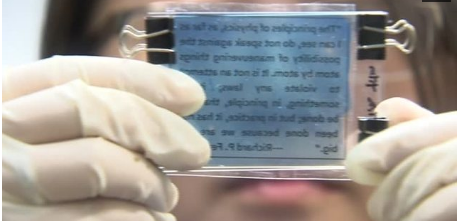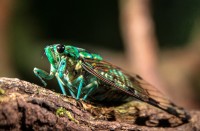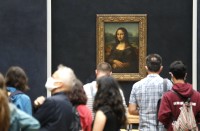
CALIFORNIA, United States (Reuters) — Scientists in California have created rewritable paper, printed using light instead of ink, that can be erased and reused up to 80 times.
In the United States alone, about 70 million tons (63.5 million metric tons) of paper and paperboard are used each year, with more than 350 million magazines and 24 billion newspapers published, according to the US Environmental Protection Agency.
The chemists at the University of California, Riverside, hope the new technology can help cut down on the amount of paper we use, and address issues of resource sustainability.
At the heart of the new technology are nanoparticles, materials thousands of times smaller than the width of a human hair.
The nanoparticles are mixed with commercial redox dyes, which have color-changing properties, and applied to the paper.
When a clear plastic sheet printed with text is placed on top of the paper and the two layers put under an ultraviolet (UV) light, the light bleaches the dye, leaving the portions that constitute the text on the paper.
“This material then can absorb the light and after that, it can initiate some kind of reactions that can change the color of some sort of dye that we use. So when we mix this material with the dye, then we can control the color and we can write using just the UV light,” said PhD student Rashed Al Eisa (pronounced RA-shid Al-EE-sa).
Al Eisa worked on the rewritable paper with Yadong Yin, the chemistry professor whose lab led the research.
The text fades in five days, as oxygen in the air takes electrons from the dye nanoparticles and turns them back to their original color.
The process can be accelerated by heating the paper to 120 degrees Celsius or 250 degrees Fahrenheit, making it reusable in a matter of minutes.
“We showed that this writing process can be done for more than 80 times with a good resolution,” Al Eisa said.
The process can also be used to print text or graphics onto plastic or glass, or a range of other surfaces. But the main use, the scientists think, could be for printed materials that are only used for a short time, like newspapers, leaflets or advertising posters.
The USC Riverside research group collaborated with scientists at Shandong University in China.







